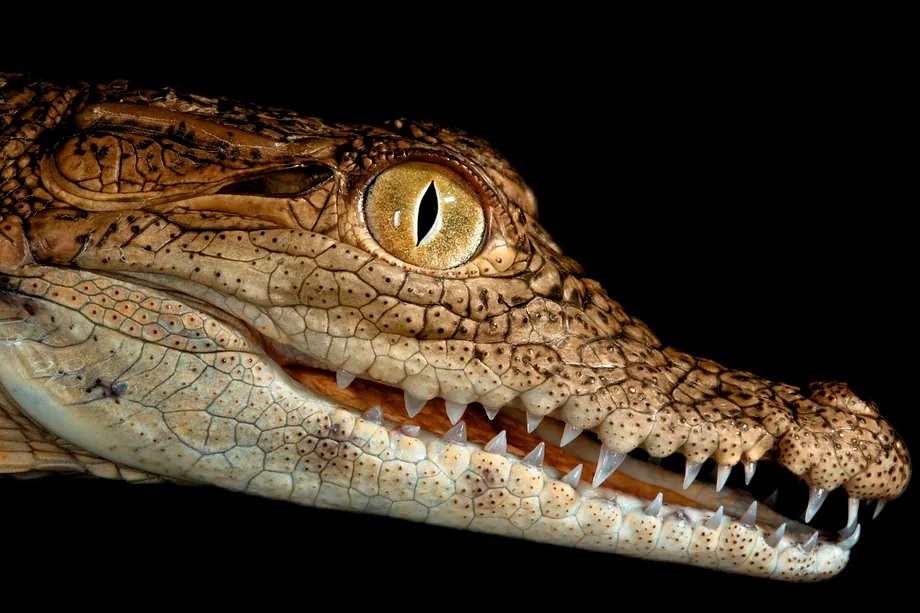How can the diversity of living organisms be explained? Although the answer that usually comes to mind is genetics, the truth is that it is not the only explanation. A multidisciplinary team from the University of Geneva (UNIGE) has just demonstrated that the scales on the head of crocodiles arise from the mechanics of growing tissues without genetic involvement.
The result of this research, just published in the journal Nature, changes the perspective on the physical forces involved in the development and evolution of living beings.
The origin of the diversity and morphological complexity of living organisms on the planet remains one of the greatest mysteries of science. To solve this enigma, scientists study a wide range of species. In the laboratory of Michel Milinkovitch, professor in the Department of Genetics and Evolution at the Faculty of Science of UNIGE, the development and evolution of skin appendages in vertebrates, such as feathers, hair, and scales, are investigated to understand the mechanisms responsible for this diversity, mostly determined by chemical processes in embryonic development involving interactions between numerous molecules.
Previously, the team had already demonstrated that the embryonic development of the scales on the crocodile's head, unlike the body scales, originated from a process similar to crack propagation, as in any material under mechanical tension. In other words, they were not controlled by genetics, but their morphology is random and generated from fracturing structures. In fact, even the scales on the right and left sides of the head are different. The size, shape, and arrangement of the scales are different in each individual, as if it were a fingerprint. Nevertheless, the true nature of this process was unknown.
Thanks to a new multidisciplinary work, scientists have solved this mystery. First, they tracked the evolution of the head scales during the embryonic development of the Nile crocodile, which lasts about 90 days in total. While the skin covering the jaws remains smooth until day 48, skin folds appear around day 51. They then extend and interconnect to form irregular polygonal scales, including large elongated ones on the upper snout, and smaller ones on the sides of the jaws.
If an animal's skin grows faster than the underlying tissue to which it is attached, it folds and wrinkles because its growth is limited. The team explored whether this process explains the appearance of skin folds, and therefore scales on the embryonic crocodile. They developed a technique to inject a hormone into crocodile eggs that activated the growth and stiffness of the epidermis: EGF (epidermal growth factor). The scientists discovered that activating growth and increasing the stiffness of the skin surface caused a spectacular change in the organization of the folds.
"We observed that the embryo's skin folds abnormally and forms a labyrinthine network resembling folds in the human brain. Surprisingly, when these EGF-treated crocodiles hatch, this brain-like fold relaxes and adopts a pattern of much smaller scales, comparable to those of another crocodile species: the caiman," explain Gabriel Santos-Durán and Rory Cooper, postdoctoral researchers in Michel Milinkovitch's laboratory and co-authors of the study. Therefore, variations in skin growth rate and hardening provide a simple evolutionary mechanism capable of generating a wide diversity of scales among different crocodile species.
The scientists used an advanced imaging technique known as "light sheet microscopy" to quantify the growth rate and geometries of the various tissues (epidermis, dermis, and bone) that make up the embryo's head, as well as the organization of collagen fibers in the dermis. With this data, they built a three-dimensional (3D) computer model to simulate restricted skin growth. This method also allowed the researchers to explore the effects of changing growth rates and tissue stiffness.
"By modifying these parameters, we can generate the shape of the head scales corresponding to Nile crocodiles, both treated with EGF and without it, as well as to the spectacled caiman or the American alligator. These computer simulations demonstrate that tissue mechanics can easily explain the diversity of shapes of certain anatomical structures in different species, without involving genetic factors," concludes Ebrahim Jahanbakhsh, a computer engineer in Michel Milinkovitch's laboratory and co-author of the study.
